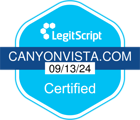Narcan, a brand name for the generic drug naloxone, is a medication that plays a crucial role in saving lives during opioid overdoses. With the opioid epidemic continuing to spread throughout communities across the country, Narcan has become a vital tool in combating opioid addiction and preventing fatal overdoses.
How Narcan Works
As an opioid antagonist, Narcan’s primary function is to neutralize the life-threatening respiratory depression that opioids can induce, thereby averting an immediate crisis and offering a chance for recovery. Narcan operates by competing with opioids for the same receptors in the brain but without activating them, effectively pushing the opioids off these receptors to stop their dangerous effects.
Narcan’s role extends beyond emergency response. It acts as a bridge to longer-term addiction treatment solutions by preserving life and providing an opportunity for individuals to seek help. The swift action of Narcan can be a pivotal moment for many, turning what could be a tragic end into a wake-up call and the first step towards recovery.
Narcan can be administered by non-medical personnel, making it a frontline defense in overdoses when the individual is outside of hospital or first responder settings. This immediate intervention can stabilize the individual until professional medical help arrives.
The Accessibility of Narcan: Who Can Get It and How
Unlike many other medications, Narcan does not require a prescription and is available in all 50 states, making it readily accessible to the general public. Pharmacies across the country stock Narcan, and many community-based programs and health organizations distribute Narcan for free. Training sessions and educational materials are frequently offered alongside the distribution of Narcan, ensuring that individuals know how to use it properly.
Debunking Three Common Myths About Narcan Use
A myriad of misconceptions about Narcan persists, clouding the public’s perception of its use and importance.
- One prevalent myth is that Narcan perpetuates or encourages opioid use. This myth is based on the erroneous belief that having a safety net allows individuals to engage in riskier drug use. Research consistently refutes this claim, showing that the availability of Narcan does not alter drug consumption behaviors but does significantly reduce the number of fatal overdoses.
- Another common falsehood is the notion that Narcan is only necessary for habitual drug users, disregarding the stark reality that opioid overdoses can affect anyone, from the first-time user to those taking prescribed opioids for pain management.
- There is also a misconception that Narcan’s revival effects are traumatic or harmful. However, while the reversal of an overdose can be physically uncomfortable due to withdrawal symptoms, the alternative is often fatal.
Understanding the truth of how Narcan works can dismantle stigma, encourage its widespread adoption, and ultimately save lives.
Canyon Vista Recovery Can Help
Addiction is a treatable, chronic disease that can affect anyone. If you or someone you care about is grappling with alcohol or drug addiction, now is the time to get help. Canyon Vista Recovery Center, located in Mesa, Arizona, has a professional staff to help you regain control of your life. Using a combination of medical and psychiatric treatment and care, evidence-based addiction treatments, and holistic therapies, our staff will help you as you travel your path toward recovery. Now is the moment to seek help. Contact us today.











